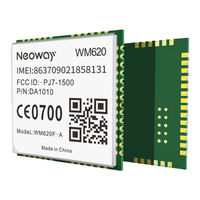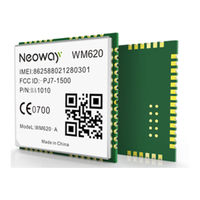
Neoway WM620 Series Manuals
Manuals and User Guides for Neoway WM620 Series. We have 2 Neoway WM620 Series manuals available for free PDF download: At Command Manual, Hardware User's Manual
Neoway WM620 Series At Command Manual (160 pages)
Brand: Neoway
|
Category: Control Unit
|
Size: 3 MB
Table of Contents
Advertisement
Neoway WM620 Series Hardware User's Manual (46 pages)
Brand: Neoway
|
Category: Control Unit
|
Size: 1 MB

